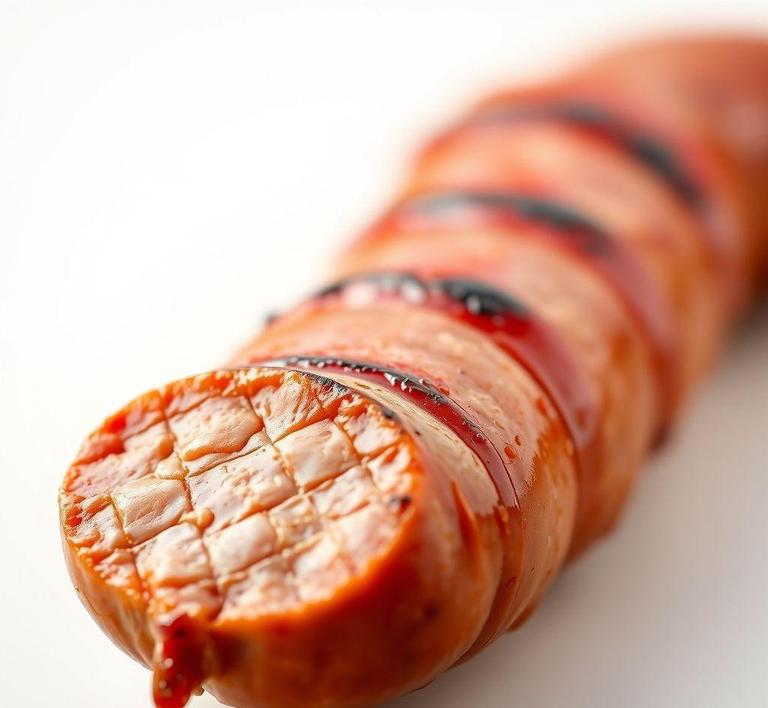If you’ve ever found yourself with leftover pork sausage and wondered whether you can safely refreeze it, you’re not alone! Refreezing pork sausage can be a bit of a gray area, but with the right approach, it can be done without compromising its taste or texture. Whether you’ve bought a bulk pack or cooked up more than you could eat in one sitting, understanding how to properly handle and refreeze your sausage is key to keeping it fresh and safe. In this guide, we’ll break down everything you need to know, from the best freezing practices to tips on reheating your sausage to perfection, so you can enjoy it again without worry!
Can You Refreeze Pork Sausage?

Pork sausage, like many other types of meat, is a versatile and popular protein, often used in various cuisines for breakfast, dinner, and everything in between. The question of whether you can refreeze pork sausage is something many people ponder when they find themselves with leftovers or after they’ve thawed a package and decided not to use it. The answer, in short, is yes, but with some important nuances that you need to be aware of in order to do it safely and preserve the best quality of the sausage.
Refreezing pork sausage, or any meat for that matter, is generally safe as long as certain guidelines are followed. However, it is essential to note that it can affect the texture, flavor, and overall quality of the sausage, particularly when it is done improperly. The core issue when refreezing any meat is how the thawing process impacts its cell structure. When meat is frozen, the water inside its cells turns into ice. As it thaws, these ice crystals melt, and the meat’s texture can become mushy or dry. If refrozen, this process happens again, which can lead to a less than desirable result.
How To Refreeze Pork Sausage?
If you decide to refreeze pork sausage, there are several crucial steps to ensure the process is done safely and that the quality is maintained as much as possible.
-
Thawing Properly
To begin, you must thaw the sausage correctly. Ideally, pork sausage should be thawed in the refrigerator, not on the counter. This minimizes the risk of bacteria growth, which can occur when meat is left at room temperature for too long. The refrigerator allows the sausage to thaw slowly, keeping it within a safe temperature range (below 40°F or 4°C). If you’ve thawed the sausage in the microwave or using warm water, it’s recommended not to refreeze it, as this increases the chances of bacterial contamination.
-
Refreeze As Soon As Possible
Once the sausage has been thawed in the refrigerator, it should be refrozen as soon as you determine that you won’t be using it. Ideally, this should be within 1-2 days after thawing. The sooner you can refreeze the sausage, the better the final quality will be.
-
Packaging
When refreezing, it’s crucial to package the pork sausage well. For the best results, wrap the sausage tightly in plastic wrap or aluminum foil to prevent air from reaching the meat. You could also place it in a vacuum-sealed bag or an airtight container. The less air that comes into contact with the sausage, the less chance there is of freezer burn. If you’re working with individual sausage links, you might want to separate them with wax paper or parchment so they don’t stick together in the freezer.
-
Labeling
It’s always a good idea to label your frozen meat with the date it was originally frozen. This will help you track how long it’s been stored and ensure that you use it within a safe window. Ideally, frozen pork sausage should be used within 1-2 months, although it can last longer if stored properly.
-
Refrigerating Before Cooking
After refreezing, it’s a good idea to thaw the sausage in the refrigerator again before cooking it. Never refreeze pork sausage multiple times, as this would degrade the texture and increase the chances of bacterial growth.
Quality Impact
While it’s safe to refreeze pork sausage, it’s important to understand that the quality can be affected in a few ways. The two main factors that influence the quality of refrozen pork sausage are texture and flavor.
- Texture Changes: The most significant impact of refreezing pork sausage is on its texture. Every time meat is frozen and thawed, ice crystals form within the cells of the sausage. These ice crystals puncture the cell walls, breaking down the structure of the meat. This can result in a mushy or dry texture once cooked. When pork sausage is refrozen, this process is repeated, leading to further degradation of the texture.
- Flavor Alteration: While the flavor may not be drastically affected by a single freeze and thaw cycle, it can lose some of its freshness and complexity. The sausage may become slightly more bland or take on a freezer-burned taste if not wrapped properly. This is because the moisture from the sausage can escape during freezing, leading to a less juicy and flavorful end product.
- Fat and Juice Loss: Pork sausage is often made with a high fat content, and refreezing can cause the fat to break down and lose its richness. This can make the sausage feel drier and less flavorful once cooked. Additionally, any juices inside the sausage that were trapped during the first freeze can escape during the thawing process, leading to a drier product after refreezing.
- Bacterial Risks: As mentioned, one of the main concerns when refreezing pork sausage is the potential growth of bacteria. If the sausage has been improperly thawed or held at room temperature for too long, bacteria can multiply. Refreezing it can trap these bacteria inside, and even though freezing slows down bacterial growth, it doesn’t kill bacteria. This is why it’s so important to follow the proper thawing and refreezing procedures, as the safety of the sausage is paramount.
Refreezing pork sausage can be done, but with caution. While the process is generally safe, you should be aware of the potential impact on quality. The texture may become more crumbly or mushy, and the flavor might be slightly dulled. For the best results, it’s important to thaw the sausage properly, refreeze it quickly, and package it in airtight, moisture-proof material. Always be sure to keep an eye on the time, ensuring that you use the sausage within a reasonable period after refreezing.
If you’re looking to maintain the best flavor and texture, it’s best to only freeze pork sausage once, avoiding multiple cycles of freezing and thawing. With the right care, though, you can make refreezing work, ensuring that no sausage goes to waste while still keeping it safe and relatively tasty.
Is It Safe To Refreeze Pork Sausage?
Refreezing pork sausage is a topic that often raises questions among home cooks and food enthusiasts, mainly because of concerns about food safety, texture, and flavor. To begin with, refreezing pork sausage is generally safe as long as it’s done correctly and under certain conditions. However, a few factors must be taken into account before deciding whether or not to refreeze.
The First Rule Of Refreezing: Temperature
Pork sausage, like all meat products, should only be refrozen if it has been handled safely from the start. One of the most important things to consider is how long the sausage has been out of the freezer. According to food safety guidelines, pork sausage should only be refrozen if it has been thawed in the refrigerator and hasn’t spent more than 1-2 hours at room temperature. If it has been left out at room temperature for longer, the risk of bacterial growth increases, making it unsafe to refreeze.
Quality Loss On Refreezing
Although it is safe to refreeze pork sausage in terms of food safety, there is a downside when it comes to quality. The main issue is texture degradation. Sausage contains fat and moisture that help maintain its juicy, flavorful texture when cooked. Every time you freeze and thaw meat, water molecules inside the sausage expand and rupture the cell walls, leading to a loss of moisture. As a result, refrozen pork sausage may end up being drier, more crumbly, and less flavorful than when it was first frozen.
Signs That Pork Sausage Should Not Be Refrozen
While refreezing pork sausage can be done safely, there are certain red flags to watch out for that indicate you should never attempt to refreeze your sausage. These signs usually point to issues with the sausage’s safety or quality:
1. Visible Ice Crystals Or Excess Moisture
If you notice that your sausage is covered in large ice crystals or has accumulated excess water after thawing, it could indicate that the sausage was thawed improperly or has been sitting at a dangerously high temperature for too long. If this happens, the sausage has likely started to break down in a way that could allow bacteria to flourish, which makes it unsafe to refreeze.
2. Off Smell Or Color
If the sausage has an unpleasant, sour, or rancid odor, or if the color has shifted from its usual pink or red hue to a dull, grayish tint, don’t refreeze it. These are classic signs of spoilage, and attempting to refreeze meat that has already gone bad could put you at risk for foodborne illnesses like salmonella or E. coli.
3. Extended Time Outside The Fridge
If your pork sausage has been left out for more than two hours at room temperature (or more than one hour if it’s particularly hot outside), it has been in the danger zone where bacteria can grow rapidly. Refreezing it at this point is not just risky but dangerous. This rule holds even if the sausage still looks and smells fine-don’t take the chance.
4. Pre-Refrozen Sausage
If the sausage you’re considering refreezing has already been frozen and thawed before, it is not recommended to refreeze it again, as each cycle of freezing and thawing compromises its quality and safety. Ideally, pork sausage should only be frozen once to preserve both taste and texture.
Common Refreezing Mistakes
Refreezing pork sausage isn’t as simple as just putting it back in the freezer after thawing. Some common mistakes can lead to either safety hazards or subpar results in terms of taste and texture.
1. Thawing At Room Temperature
One of the biggest mistakes people make when thawing pork sausage is leaving it out at room temperature to defrost. While it’s tempting for the sake of convenience, this practice can result in the growth of harmful bacteria. Thawing sausage should always be done in the refrigerator, where it can thaw slowly and safely. If you’re in a hurry, you can also thaw it using the microwave or by placing it in a sealed plastic bag submerged in cold water, but never at room temperature.
2. Refreezing Without Packaging
If you’re thinking about refreezing pork sausage, be sure it’s well-packaged to prevent freezer burn and preserve flavor. Freezer burn occurs when air comes into contact with the surface of the sausage, causing dehydration and oxidation. This not only affects the texture but also the taste. Make sure the sausage is tightly wrapped in plastic wrap or foil, and ideally placed in a freezer-safe plastic bag or container.
3. Not Checking For Quality Before Refreezing
Sometimes, people get overzealous about saving food and forget to inspect the sausage for signs of spoilage. Before refreezing, always check for signs of spoilage, including unpleasant odors, changes in color, or the presence of slime. If you’re unsure, it’s better to err on the side of caution and discard the sausage rather than take the risk.
Tips And Tricks
If you find yourself needing to refreeze pork sausage, here are some tips and tricks to ensure you’re doing it as safely and effectively as possible:
1. Portion It Out Before Freezing
Instead of freezing a whole package of sausage that you might only use part of later, consider dividing it into smaller portions before freezing. This will make it easier to defrost only the amount you need and avoid having to refreeze any leftovers.
2. Label And Date Everything
Whenever you freeze meat (or any perishable food), make sure to label and date the package. This helps you track how long the sausage has been in the freezer, and it also prevents you from forgetting how many times the sausage has been thawed and refrozen.
3. Use Vacuum Sealing For Better Quality
If you plan to refreeze pork sausage, using a vacuum sealer can help preserve its freshness and quality. The vacuum-sealed bag eliminates excess air, which helps prevent freezer burn and extends the life of the sausage in the freezer.
4. Cook Before Refreezing
If you’re concerned about the loss of texture or safety when refreezing raw sausage, consider cooking it before freezing. Cooked sausage tends to freeze better than raw, and it will maintain its flavor and texture even after being frozen and thawed multiple times.
Conclusion
Refreezing pork sausage can be done safely, but it comes with a few risks, particularly regarding quality. While you can generally refreeze sausage if it has been thawed safely in the refrigerator and hasn’t been left out for too long, it’s essential to keep in mind that each cycle of freezing and thawing degrades the meat’s texture and moisture, which can lead to a dry, rubbery product. Additionally, you must always check for any signs of spoilage, including off smells, discoloration, or excessive moisture, before deciding whether or not to refreeze.
By following the proper steps for thawing, packaging, and checking the quality of your sausage, you can safely refreeze pork sausage without compromising too much on its flavor. However, as with any food-related decision, being cautious and informed is key to ensuring both your safety and a tasty result.


